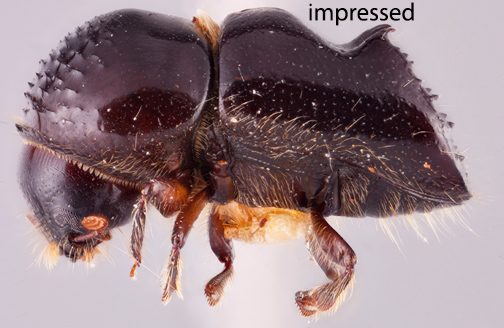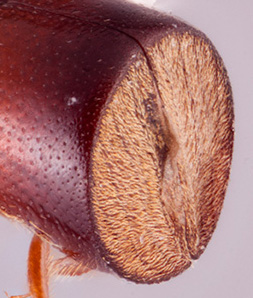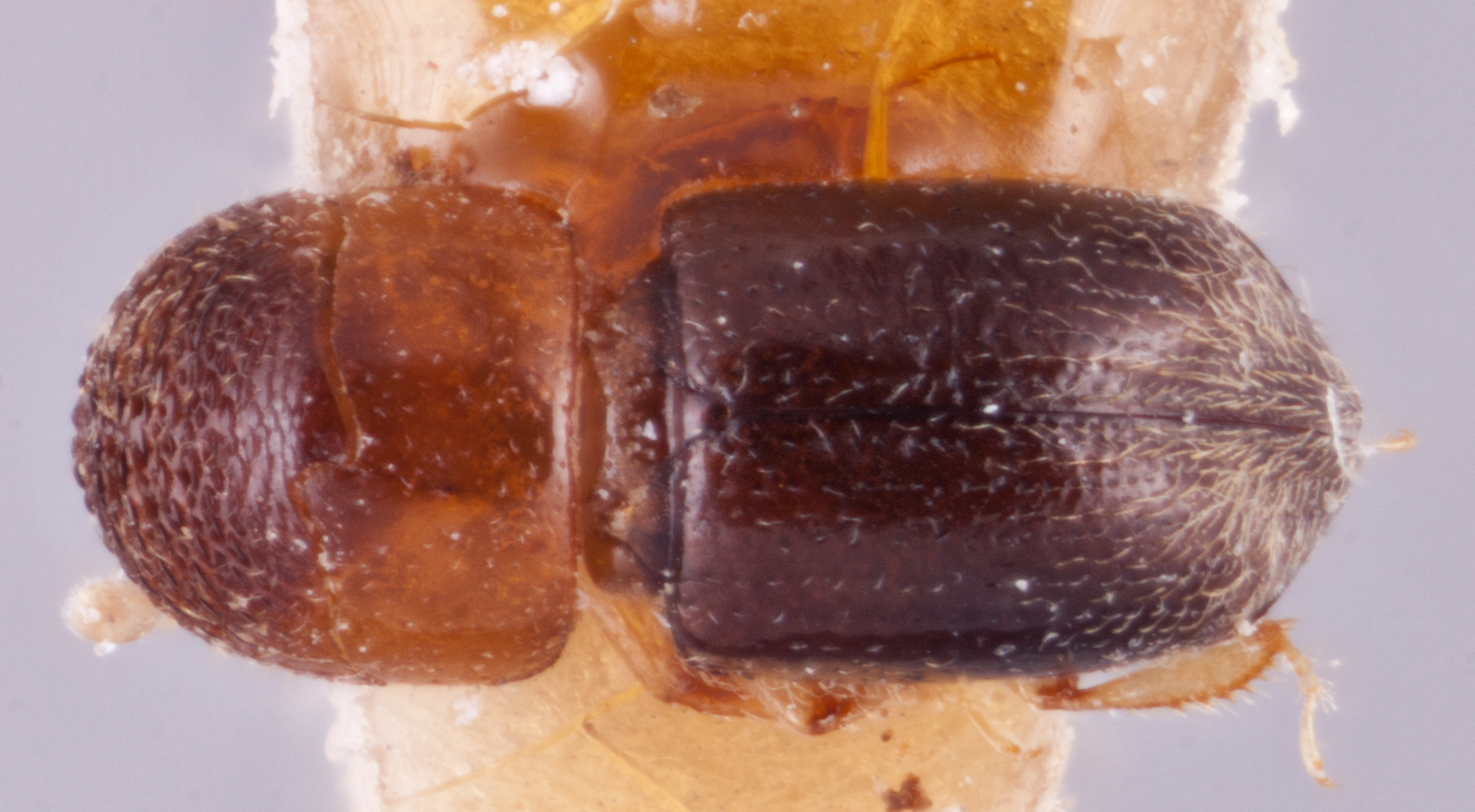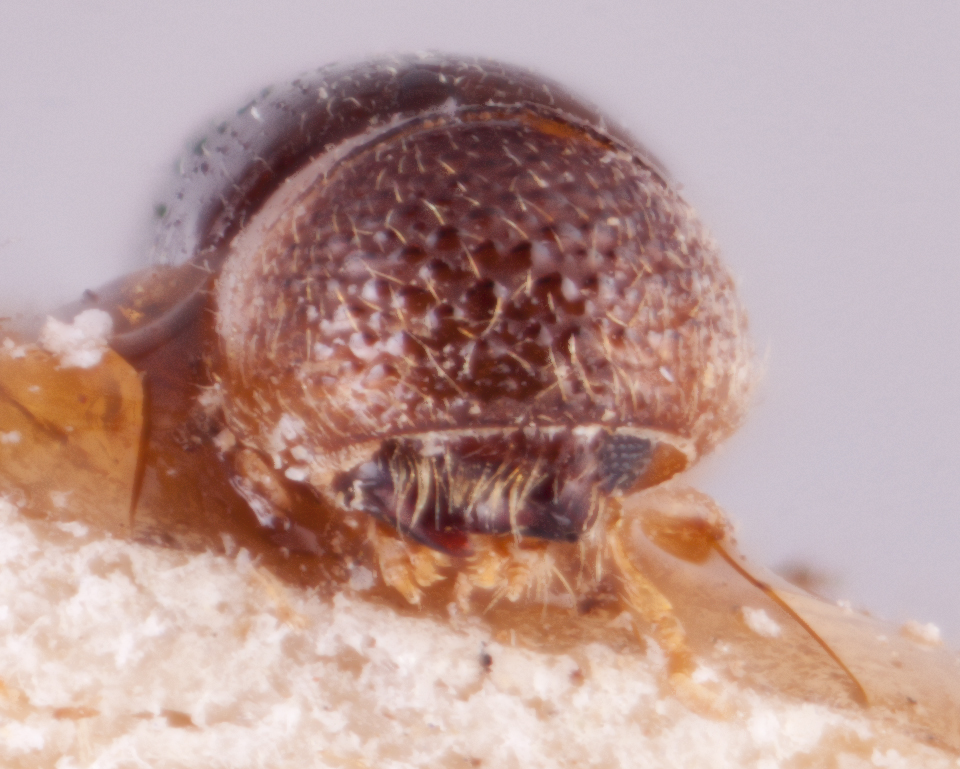Diuncus ciliatoformis
|
Diuncus ciliatoformis lateral; R.K. Osborn |
|
Diuncus ciliatoformis dorsal; R.K. Osborn |
|
Diuncus ciliatoformis declivity; R.K. Osborn |
|
Diuncus ciliatoformis frontal; R.K. Osborn |
Taxonomic history
Xyleborus ciliatoformis Schedl, 1953d: 81.
Diuncus ciliatoformis (Schedl): Hulcr and Cognato, 2009: 32.
Diagnosis
1.65−1.95 mm long (mean = 1.78 mm; n = 5); 2.36−2.62 times as long as wide. This species can be distinguished by the minute size; unarmed declivitydeclivity:
downward slope of either the pronotum or elytra
 ; moderately impressedimpressed:
; moderately impressedimpressed:
a depression in a surface
 declivitaldeclivital:
declivitaldeclivital:
pertaining to the elytral declivity
striae 1; declivitydeclivity:
downward slope of either the pronotum or elytra
 densely covered by recumbentrecumbent:
densely covered by recumbentrecumbent:
pertaining to setae that are flat against the cuticle
 setae on the striaestria:
setae on the striaestria:
punctures in rows, which may or may not be impressed to make grooves and interstriae; and laterallateral:
and interstriae; and laterallateral:
pertaining to the side
 margin of the protibiaprotibia:
margin of the protibiaprotibia:
tibia of the first pair of legs
armed with four denticlesdenticle:
a small tooth, the sides of which are equal and the tip is above the middle of the base .
.
May be confused with
Diuncus justus, Cyclorhipidion spp.
Distribution
China (Chongqing, Guizhou), East & West Malaysia, New Guinea, Taiwan, Thailand
Host plants
recorded from Shorea, Vatica (Dipterocarpaceae) and Lithocarpus (Fagaceae); Browne (1961b) suggests a preference for Dipterocarpaceae
DNA data
Sequences available for CAD.
CAD: OP607234





